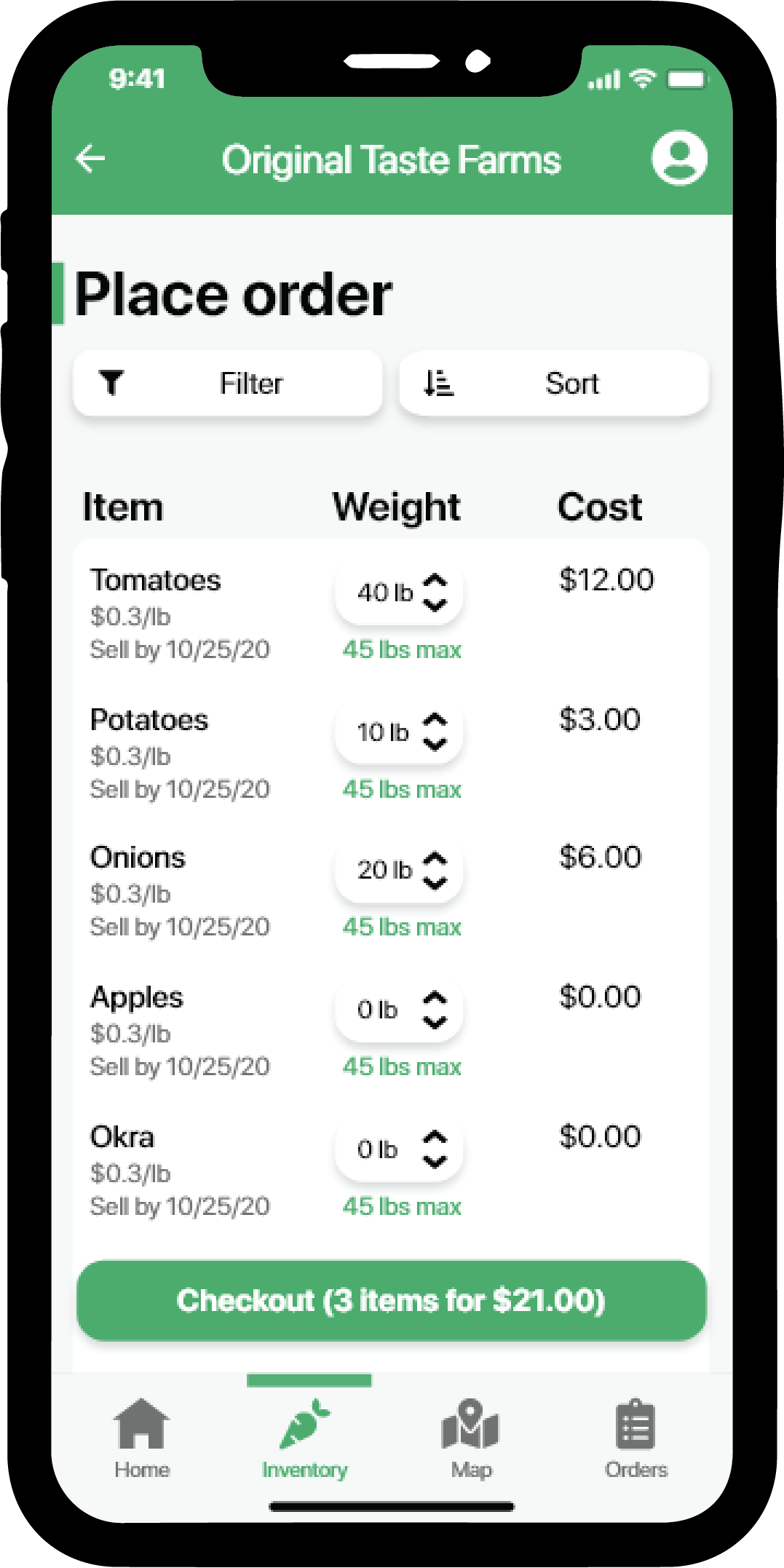
Happy Potato
Connecting farmers and convenience stores to reduce imperfect produce waste
Time:
October 2020
Team:
Shenhao Xie, Zoe Robinson
Role:
UX Designer
Background Research
Design high fidelity prototypes
Process:
Background Research, Brainstorming solutions, User Flows, Wireframes, high-fidelity Prototypes
(Focus on Design > Research)
Overview:
The Covid-19 pandemic is dramatically increasing food insecurity and straining an extremely stressed supply. Low-income communities are the ones hit hardest by the pandemic. Food swamps are prevalent in low-income communities, which are likely to be synonymous with communities of color. An abundance of unhealthy and fast food options in these areas perpetuates systemic racism by contributing to a higher rate of health issues in black and brown Americans. Our goal is to bring more affordable healthy food options to food swamps.
Happy Potato is an app that mediates the sale of imperfect produce between farmers and convenience stores in food swamps. While the app was created to benefit citizens of underserved communities, our target user base consists of local farmers and convenience store managers. Happy Potato helps farmers sell imperfect produce that is unsuitable for mass grocery chains, and allows convenience stores to stock healthy food options at an affordable price. As a result, healthy produce becomes more accessible in food swamps.
I. Research
We spent about three days looking into different aspects of the food supply chain and tried to narrow down the topic into something more local and effective. Issues we have considered include:
Nutrition: How might we evaluate and match the nutritional value of meals and foodstuffs with the dietary
needs of those on the receiving end of charitable meal programs and food pantries?
• Local action: How might people directly help those in their own community who are without means to eat healthful meals?
• Food waste/Farm fresh: How might we reduce global food waste and better make use of “ugly” produce and/or unused goods? How might we better connect farms to food banks and inject more fresh foods in the distribution system?
• Family guidance: How might we educate families on well-balanced meals through pantry-provided goods?
II. Scoping
We decided to focus on the food waste part as it is one of the biggest problem in the food supply chain. Also, we wanted to focus on low-income communities and local farms to make our solutions more specific and effective. For low-income communities, they are one of the most severely affected areas in this food crisis brought by the pandemic. On the other hand, local farms have suffered from the “imperfect food loss” for a long time.
Having settled two sides of the story, we decided to make an app that connects the local farms to convenience stores in food swamps to facilitate the redistribution of imperfect and mishandled produce that these stores can sell at affordable prices.
Our Goal
Bring more affordable healthy food options to the low-income communities
Reduce the imperfect produce loss at local farms
III. Ideation
We created two personas to represent our main users.
We went through two versions of user flow of the application which provides a comprehensive walkthrough of the users’ experience.
Then, we created sketches for the application based on the user flow that we have decided on.
We created our V1 wireframes in Adobe XD to go over all the key interactions.
Then, we explored the color palette and typefaces that we want to use and created a style guide for the app.
We created high-fidelity prototypes based on the wireframes and style guide.



















